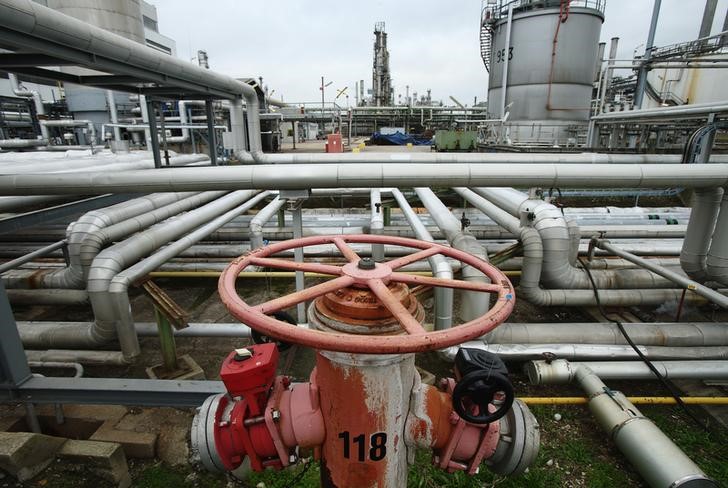By Yuka Obayashi
TOKYO (Reuters) – Oil prices eased in early trade on Wednesday as concerns over slow demand from top crude importer China grew after bearish trade data, outweighing fears over tighter global supply arising from production cuts by Saudi Arabia and Russia.
futures fell 17 cents, or 0.2%, to $86.00 a barrel by 0039 GMT. U.S. West Texas Intermediate (WTI) crude was at $82.73 a barrel, down 19 cents, or 0.2%.
Both contracts gained nearly $1 the previous day.
“Oil prices are struggling to further rise because of lingering concerns over a sluggish recovery in China’s economy and fuel demand,” said Chiyoki Chen, chief analyst at Sunward Trading.
“Also, with worries over slowing demand in the United States and Europe due to a series of interest rates hikes, upside of oil markets looks to be limited,” he added, predicting WTI would trade in the range of $75 to $85 a barrel later this month.
Both benchmarks notched their sixth consecutive weekly gains last week, the longest winning streak since December 2021 to January 2022, helped by a reduction in OPEC+ supplies and hopes of stimulus boosting an oil demand recovery in China.
But China’s crude oil imports in July fell 18.8% from the previous month to the lowest daily rate since January, customs data showed on Tuesday, as major exporters cut back overseas shipments and domestic stocks continued to build.
Overall, China’s imports contracted by 12.4% in July, far steeper than the expected 5% drop. Exports fell by 14.5%, compared with a fall of 12.5% tipped by economists.
Meanwhile, a monthly report from the U.S. Energy Information Administration (EIA) on Tuesday projected oil production to rise by 850,000 barrels per day (bpd) to a record 12.76 million bpd in 2023, overtaking the last peak of 12.3 million bpd in 2019.
Crude prices have been rising since June, primarily because of extended cuts to Saudi Arabia’s production as well as increasing global demand, the EIA said.
The world’s top exporter Saudi Arabia last week extended its voluntary production cut of 1 million bpd to the end of September, adding that it could be extended beyond then or deepened. Russia also said it would cut oil exports by 300,000 bpd in September.
U.S. crude oil stocks rose last week, while gasoline and distillate stockpiles dropped, according to market sources citing American Petroleum Institute figures on Tuesday. [API/S]
U.S. government data on stockpiles is due later on Wednesday.
Read the full article here











